- Home
- Blog
Blog
WELCOME TO AFRICANDOCTOR: THE BEST PHYTOTHERAPY IN THE WORLD


7 natural remedies to cure infertility linked to varicocele
Varicocele and Infertility
Varicose veins of the spermatic cord itself are not a big deal and you can live your life with it calmly. But the complication of this disease is male infertility. Varicocele is one of the most common diseases among the male population and is diagnosed in 10 to 15% of all men. In addition, if we take all infertile men, varicocele is detected in 40% of them. In addition, if we separately distinguish a group of men with so-called secondary infertility (i.e. men whose women have already become pregnant, but who cannot currently become fathers), it turns out that 80% of these men have a varicocele. As infertility in 30 to 40% of cases are male and in 20% mixed, it is necessary to examine both partners.
Infertility is the absence of conception for 1 year of regular sexual activity without using a contraceptive method.
Our natural remedy for varicocele
If you want to regain your fertility and get rid of varicocele you have come to the right place. This is the best natural remedy one can choose to treat varicocele effectively. When you have varicocele your scrotum looks like a bag of worms. It mostly manifests on the left side. This is due to a dilation of the veins located at the level of the spermatic cord. Our tisane made of the best plants has special properties that help to tighten the veins and bring them back to the normal size. It can also increase the production and quality of sperm which are lowered when you have varicocele. Our experts will keep in touch with you during the whole treatment and will give you advice on other natural remedies.
Interested in our natural remedy? Click here
How does varicocele cause infertility?
Infertility in men with varicocele develops for the following reasons.
Through the veins of the scrotum, blood flows from the testicle and surrounding tissue to the heart. In this case, the blood flows from bottom to top, against gravity. Normally, a special system of valves on the venous wall prevents the reverse flow of blood through the veins. When the veins expand, these valves stop working, as a result of which the blood begins to make "pendulum movements" in the vein. As a result, the blood supply to the testicle as a whole suffers. The venous network around the testicle becomes larger and larger, and in pronounced cases, the testicle appears to be immersed in a sponge of the venous vessels. Such a blood "pillow" from the venous vessels around the testicle leads to the fact that it stops cooling.
It is known that sperm production requires a lower temperature - between 32.5 ° and 34.5 ° C, which means that with varicocele, the formation of sperm stops.
In addition, due to the peculiarities of testicular tissue with varicocele, the so-called aseptic autoimmune inflammation that inhibits spermatogenesis may develop there. This is why varicocele is one of the main factors of male infertility.
Diagnostics
To diagnose infertility, it is necessary to analyze the ejaculate. In 65-75% of men with varicocele, the number of sperm and their motility are significantly reduced.
The treatment
Treatment of male infertility associated with the development of varicocele should begin with the elimination of the cause. that is varicocele. As a rule, surgical methods of treatment are used.
As a rule, after the elimination of varicocele in 31 to 90% of cases, normal spermatogenesis is restored, the quality of sperm is considerably improved. According to some foreign authors, among 986 patients over 12 years of follow-up after varicocele surgical treatment, the number of sperm improved in 70% of cases, in 53% of cases, the wives of these patients had a pregnancy.
5 natural remedies to cure infertility linked to varicocele
1- Absinthe

Popular recipes based on wormwood are effective in fighting the expansion of superficial vessels. To get rid of the symptoms of varicocele, use this ointment:
-we dry the grass in the sun;
-grind to the powder state;
-mix with vegetable oil in a ratio of 1: 4;
-we insist on a glass container for 2 days.
The ointment treats the affected area 4 to 6 times a day. The duration of treatment is 2 to 8 weeks.
2- Seated baths
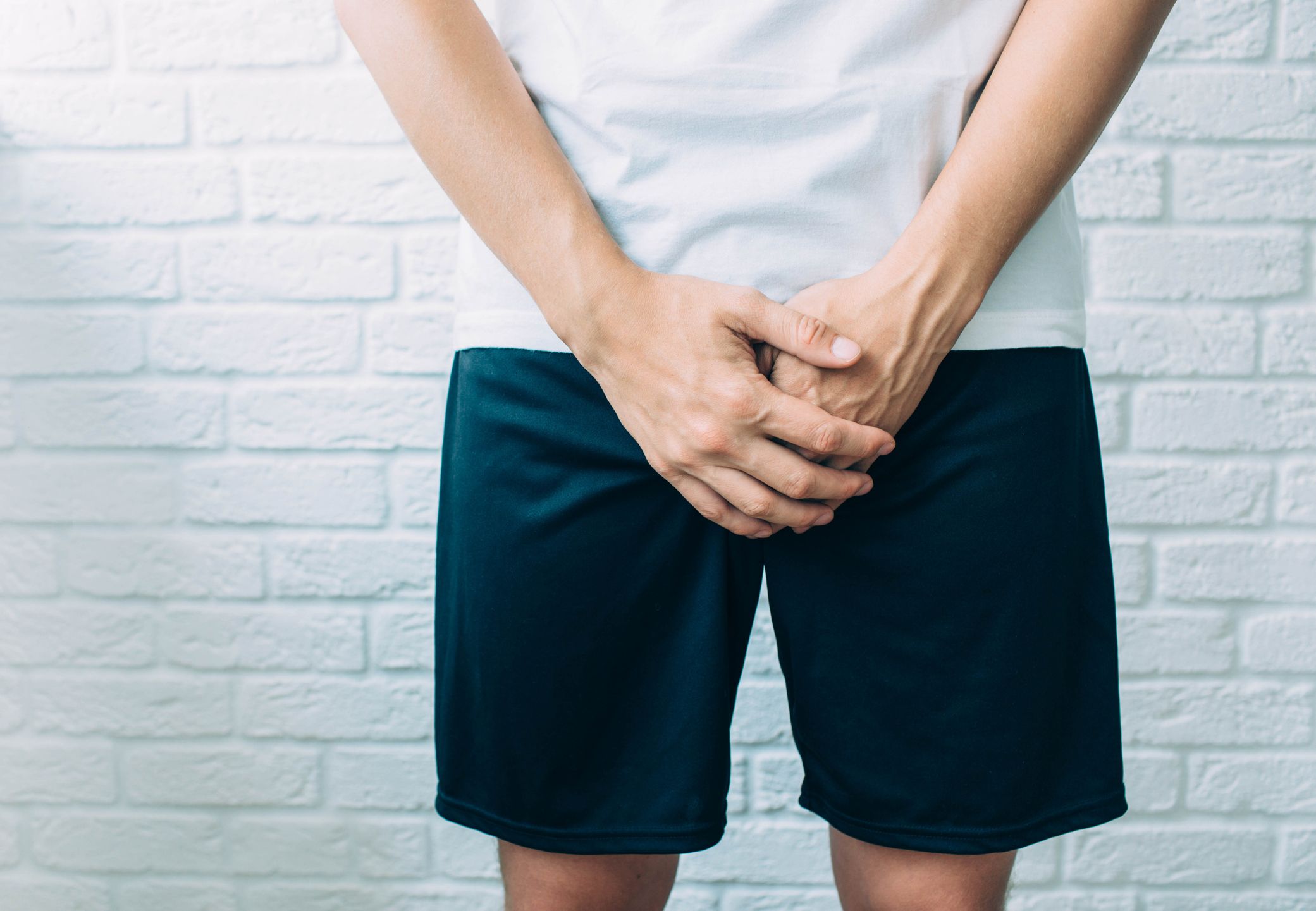
As part of the alternative treatment of varicose veins of the pelvic veins, knee or sessile baths are used. They stimulate blood circulation in the testicles, prevent thrombosis.
3- Angelic (angelica )
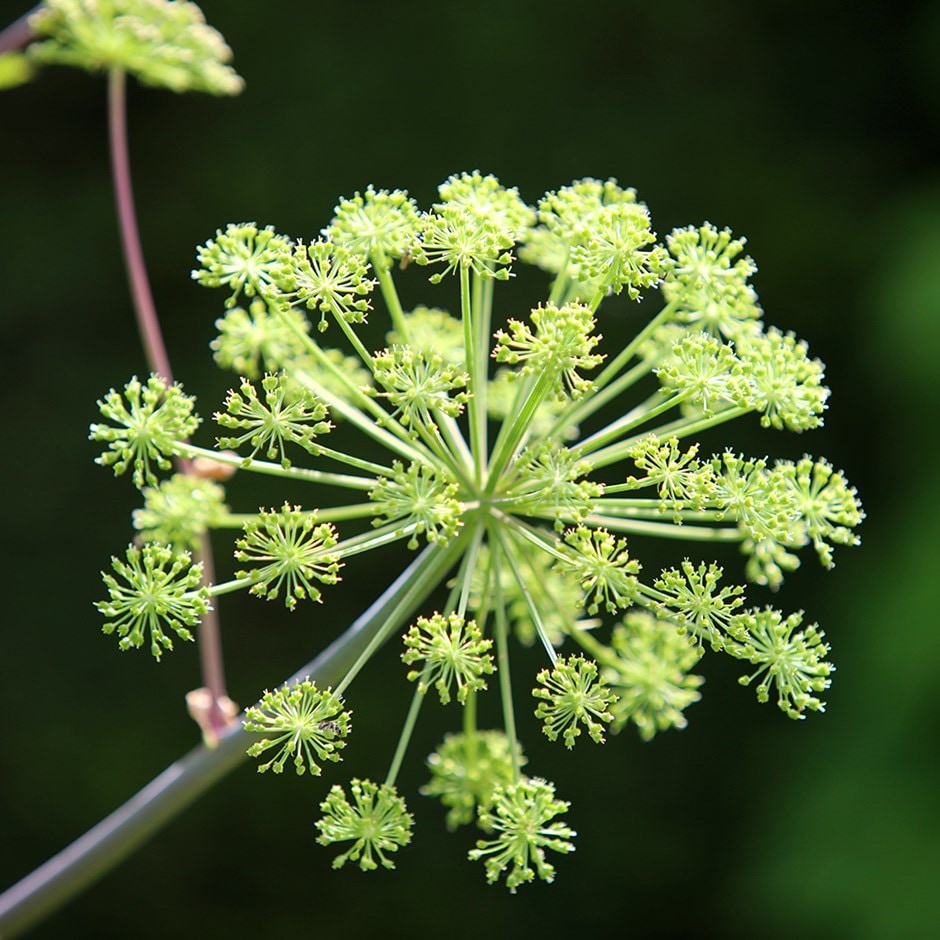
Medicinal angelica has antispasmodic, anti-inflammatory, and venotonic activity. For the treatment of varicocele, a decoction of grass is used:
-200 g of raw materials are boiled in 2 l of water for 5 minutes;
-the filtered broth is poured into the bath;
-mixed with hot water (45-50 ° C);
the bath is taken daily for 25-30 minutes for 2 weeks.
Before using traditional treatment methods, consult your doctor. Baths are contraindicated in bacterial proctitis, hemorrhoids.
4- Willow

In popular therapy, baths with white willow bark are considered particularly useful:
-5 tablespoons. l the ground bark is boiled in 3 l of water for 10 minutes;
-the cooled broth is mixed with hot water;
-take a bath for 15-20 minutes once a day.
The duration of treatment depends on the severity of the symptoms of varicocele. In 2/3 patients, the severity of the scrotum disappears after 4-5 procedures.
5- Calendula

Calendula leaves and flowers have vasoconstrictive, anti-inflammatory, and antiseptic properties. They are used to treat varicocele with any degree of varicose veins.
Folk calendula recipe:
-a glass of leaves and flowers of the plant is soaked in 1 bucket of hot water for half an hour;
-the filtered infusion is heated to 50 ° C;
-pour into the bath.
The duration of treatment is 2 to 4 weeks. Knee baths take 15-20 minutes once a day.
6- Juices
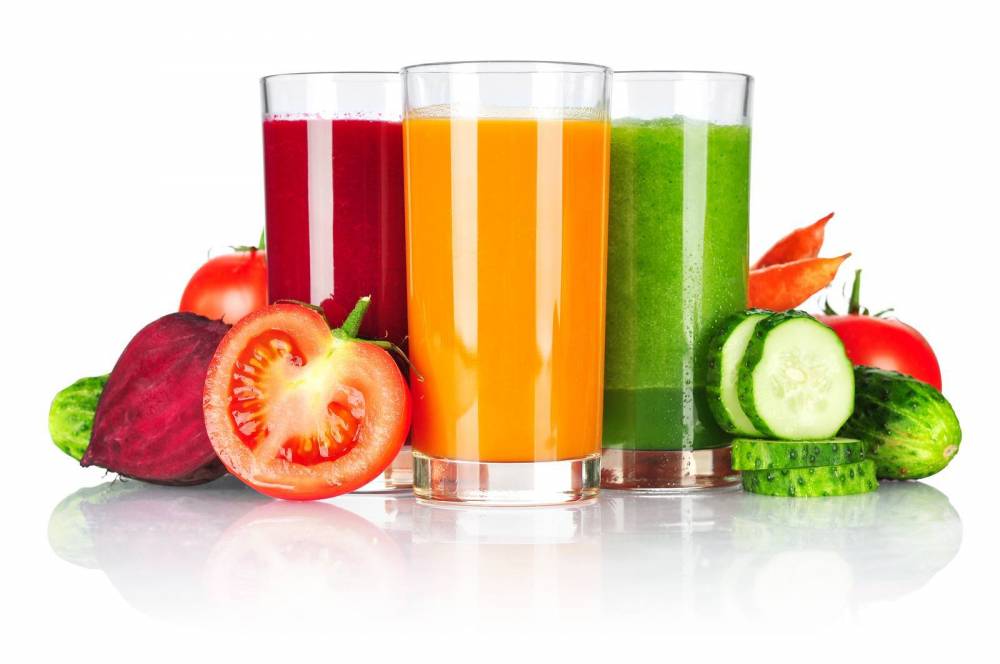
Freshly squeezed juice from plants and fruits is a source of anticoagulants, vitamins, and trace elements. The folk remedy stimulates cell metabolism, strengthens the walls of blood vessels with varicocele.
7- Kalina (Viburnum opulus)

The berry normalizes venous pressure, which reduces the load on the vessels that supply the testicles. In the fight against varicocele, viburnum juice is taken as a 2-week cure.
Folk viburnum recipe with varicocele:
-200 g of viburnum fruit pass through a meat grinder;
-mixed with 15 ml of melted honey;
-150 ml of juice are diluted with 100 ml of mineral water without gas.
For the treatment of varicocele in humans, the diluted juice is taken 250 ml 3 times a day 1 hour after a meal.
IF YOU FOUND THIS ARTICLE USEFUL, DROP A COMMENT BELOW.
FOR MORE QUESTIONS ON OUR PRODUCT You just have to click here!!!
OR CALL/WHATSAPP +22990431725
we deliver worldwide!!
These 9 natural solutions can get rid of varicocele naturally
Varicocele can be defined as venous dilation of the spermatic cord, congestion of enlarged veins in the scrotum. It can be seen both around one and around both testicles. It is a common problem with the male reproductive system and it occurs in all age groups, most commonly in adolescents. Varicocele can be a direct cause of male infertility.
Causes of varicocele

The disease occurs due to an increase in pressure in the veins forming the vascular plexus of the testicle. It occurs mostly on the left side, which is generally associated with the peculiarities of the anatomical location of these veins. In addition, the reasons may be strenuous physical activity; in old age; kidney cancer; thrombosis; phlebitis; renal venous hypertension; tumors; cysts.
9 ways to get rid of varicocele naturally
1- Africandoctor's natural remedy to cure varicocele
The only alternative known by popular medicine for varicocele is to go through surgery. But those surgeries have side effects and there is no guarantee that the varicocele won’t appear again. There may be damage to an artery during the operation and the surgery can also cause a hydrocele. So it is better to consider the pros and cons before you make a decision. Our tisane is made of African plants that have a lot of properties. One of the properties is to tighten the veins and bring them to normal size. Our treatment is safe and free of side effects. On the contrary, it will promote quality sperm production. Our tisane has proven effective in many cases where the treatment was well followed.
Click here to have access to a special remedy for varicocele!
OR CALL/WHATSAPP +22990431725
we deliver worldwide!!
2- Absinthe and St. John's Wort

Those herbs have pronounced therapeutic properties - anti-inflammatory, hemorrhagic, protective capillaries. For the treatment of varicose veins of the scrotum, they are used individually:
• Take 2 tablespoons of St. John's Wort. Cut the herbs with a knife. Pour 200 ml of corn oil. Boil in a double boiler for up to 3 hours, then cool and strain. The filtered oil is wetted with gauze. Apply it on the testicles, wrap it in polyethylene and fix it with a bandage. Leave a compress overnight. Perform the procedure 15 times in a row.
• Absinthe. In equal proportions, the ground absinthe is mixed with sour cream. The finished mass is treated with the affected area. Cover with polyethylene and secure with a bandage. Remove the compress after 7 to 8 hours. Perform the procedure at bedtime for 2 consecutive weeks.
The treatment of absinthe varicocele is contraindicated in the ulceration of the skin in the inguinal region.
3- Apple

The pulp of apples is rich in organic and mineral acids, which strengthen the walls of blood vessels. For the treatment of varicose veins, the following popular infusion recipe is used:
• 10 apples are crushed in a blender;
• pour into a thermos;
• ½ liter of boiling water is steamed;
• insist 5 hours;
• filter through a fine sieve;
• drink 75-100 ml 3 times a day 25 minutes before meals.
Varicocele folk remedies combat the main symptoms - swelling, heaviness in the scrotum, pain when walking. To improve the condition of blood vessels, treatment is carried out for 3-6 weeks.
4- Hazelnut

The hazel is a herbaceous shrub whose leaves contain venotonic substances. It is used in traditional medicine for the treatment and prevention of pathologies of the cardiovascular system.
Folk recipe for varicocele:
• 2 tablespoons of chopped leaves;
• pour ½ liter of boiling water;
• leave it under the cover for half an hour;
• filtered through a fine sieve.
Drink 150 ml 3 to 4 times a day before meals. The therapy course is for 3 weeks. If necessary, the treatment is repeated, but only after a break of 2 weeks.
5- Willow Oak

Oak bark has anti-inflammatory and willow-angioprotective properties. There are many ways to use these plants in the pathology of blood vessels and the hematopoietic system. In the treatment of varicocele, a medicinal infusion is often used.
Recipe for infusion of oak and willow bark:
• the ingredients are mixed in equal proportions;
• 3 tablespoons of the raw materials have boiled 1 liter of water;
• leave in a container under a closed lid for 3 hours;
• filtered through a fine sieve.
With an alternative treatment for varicocele, you should drink 100 ml of the infusion twice a day. The therapeutic course lasts from 2 to 4 weeks.
6- Mummy

The resinous substance has anti-inflammatory, analgesic, healing, venotonic activity. Therefore, the mummy is suitable for the treatment of varicose veins of the small pelvis.
Alcohol tincture of the mummy:
• 150 mg of mummy powder is mixed with 70 ml of flower honey;
• pour 200 ml of vodka;
• pour into a glass jar and close the lid;
• leave in a cool place for 25-30 days.
With varicocele, take 40 to 45 drops of tincture up to 4 times a day. The duration of the alternative treatment is 30 days.
7- Walnut shell
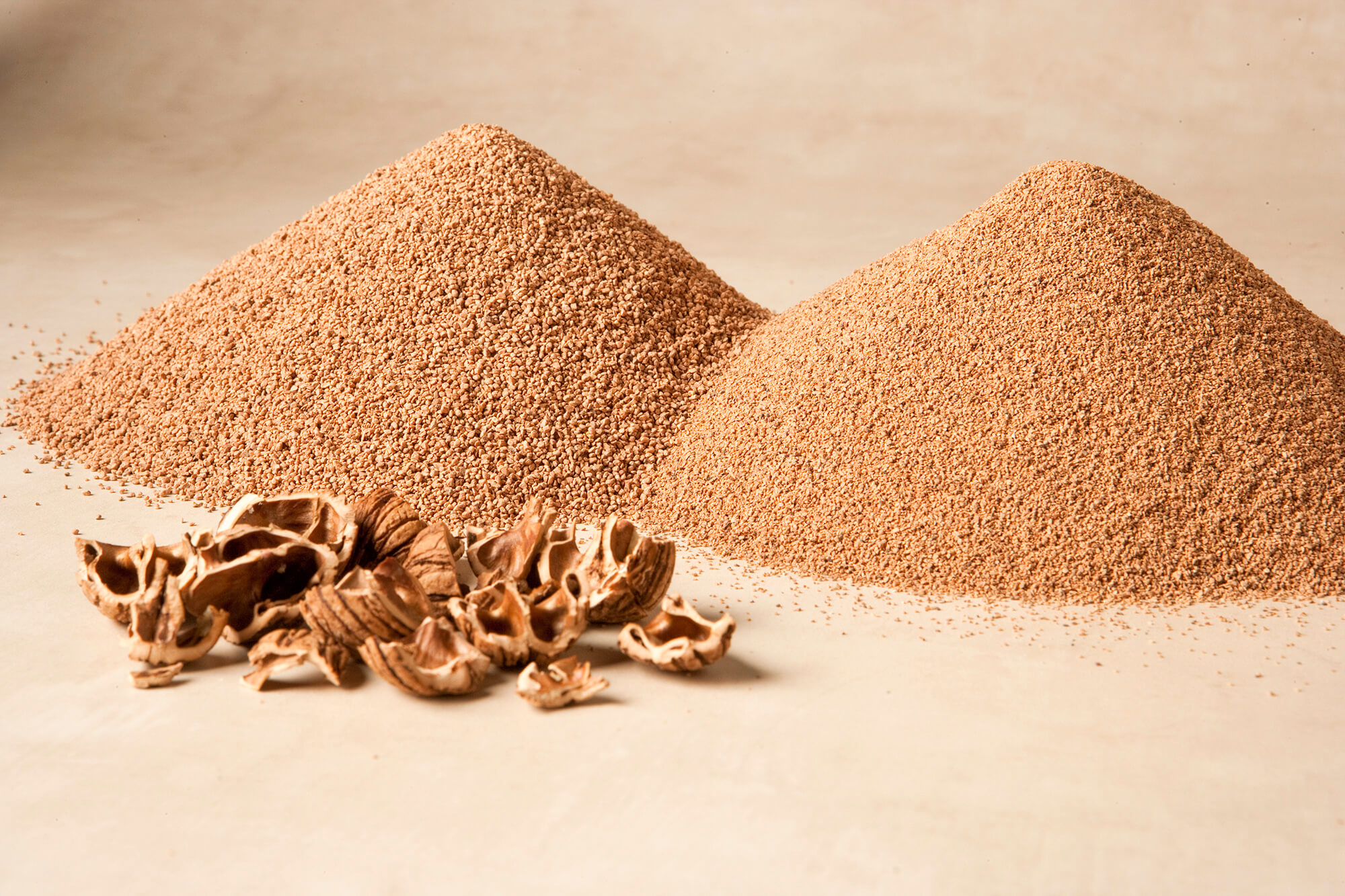
To prevent thrombosis and strengthen the venous vessels, nutshells are used. It contains bioactive components that affect the tone of smooth muscles.
Folk nut tea recipe:
• the nutshell is washed under running water;
• ground in a mixer till you get powder;
• For 1 tablespoon of the raw materials pour 250 ml of boiling water;
• leave it in a thermos for 7 to 8 hours;
• drink 60 to 80 ml 4 to 5 times a day 20 minutes before meals.
Treatment is carried out until the severity and pain in the inguinal zone have disappeared.
8- Ointments

With varicocele, ointments prepared according to folk recipes are effective. They are based on herbs with anti-inflammatory and protective capillary action.
9- St. John's wort

To prevent blood stasis in the testicles, St. John's wort ointment is used:
• 4 cups of fresh grass go through a meat grinder;
• squeeze the juice into cheesecloth;
• boil in a double boiler for 15 minutes;
• mixed with 200 ml of melted butter;
• the mixed mass is put in the refrigerator for half an hour.
In the treatment of varicose veins of the scrotum, the ointment is used 4 to 5 times a day. The therapeutic course lasts 6 weeks.
IF YOU FOUND THIS ARTICLE USEFUL, DROP A COMMENT BELOW.
FOR MORE QUESTIONS ON OUR PRODUCT You just have to click here!!!
OR CALL/WHATSAPP +22990431725
we deliver worldwide!!

CAN HERBAL REMEDY OPEN A BLOCKED FALLOPIAN TUBES?
![]() By
stephany
On 21/02/2020
By
stephany
On 21/02/2020
Are you suffering from a blocked fallopian tube and looking for a natural remedy? You have come to the right place.
WHAT IS FALLOPIAN TUBE?
Fallopian tubes are two fine tubes on either side of the uterus which carries mature eggs and motile sperms. Whereas, fallopian tube blockage is any obstruction in the tubes that prevents the egg from traveling down the uterus and prevents the sperm from getting to the egg, thus affecting fertilization and therafter pregnancy. In some cases, a tube can be partially blocked allowing the egg to pass through which can lead to fertilization but this can bring about complications like blocked ectopic pregnancy since the fertilized egg might get stuck in the tube.
IS THERE A NATURAL CURE FOR BLOCKED FALLOPIAN TUBE?
The power and existence of herbs cannot be ignored, in South Africa native herbs seems to be saving lives and fertility is not an exception. According to research, these herbs have cured several infertility problems around the world, they are very accessible and affordable compared to modern medicine, more so they have no side effect.
Here is a combination of African finest plants, very effective in unblocking the fallopian tube without having to go through surgery. This herbal tea helps your body to function properly like it was designed to, this treatment last for just two months.
Our natural remedy helps to kill bacteria like yeast, which are often the cause of infertility. It enhances the transportation of spermatozoa and fertilization which will eventually improve fertility. It is also rich in antioxidants, antioxidants are advisable in the treatment of clogged fallopian tubes while taking this treatment our experts will be with you every step of the way to monitor the progress of the treatment and give advice where needed.
Would you like to unclog your blocked fallopian tubes naturally, permanently with no side effects, and get pregnant rapidly? If yes, then you are in the right place!!!
You just have to click here!!!
OR CALL/WhatsApp +22990431725
Worldwide delivery!!
TYPES OF TUBE BLOCKAGE
There are two types of obstruction:
- organic - adhesions, fluid accumulation, narrowing due to past inflammation, polyps;
- functional - as a result of hormonal disruptions.
WHAT THE COMMON SYMPTOMS OF FALLOPIAN TUBE BLOCKAGE?

A blocked fallopian tube rarely causes any symptoms. Most women are not aware they have it until they decide to get pregnant and get disappointed due to infertility. But a blocked fallopian tube due to infection known as hydrosalpinx causes the tube to swell with infected fluid and may cause lower abdominal pain and unusual vaginal discharge.
Also, patients may experience:
- painful, irregular periods.
- Soreness during intercourse
- fever;
- pelvic pain;
If the tubal lumen is preserved at least partially, with obstruction of the fallopian tubes, you can get pregnant, but there is a risk of developing an ectopic pregnancy. Its main symptoms:
- in the early stages - the absence of menstruation, pulling pains in the lower abdomen;
- during pregnancy 5-6 weeks - acute abdominal pain due to excessive stretching, and then rupture of the tube, severe bleeding, a significant deterioration up to collapse, and fainting.
POSSIBLE CAUSES OF TUBAL OCCLUSION
The main causes of tubal infertility:
- Infections: transferred and chronic inflammatory diseases of the organs of the reproductive system - gonorrhea, chlamydia, and other STDs lead to adhesions;
- Postoperative: gynecological operations and manipulations - abortion, removal of ovarian neoplasms and others;
- Endometriosis: This frequent gynecological disease, which is manifested by the presence of small fragments of the endometrium (pieces of the uterine lining) on the fallopian tubes and in the ovaries, or even on other organs, can damage the quality of the tubes or even block them.
- prolonged wearing of an intrauterine device, its improper installation;
- tumors, cysts, polyps in the reproductive or neighboring organs that compress the tube from the outside;
- congenital pathology.
DIAGNOSIS
It all starts with a gynecologist's consultation on complaints and anamnesis of diseases and operations. To make a diagnosis, determine the degree of obstruction, carry out:
- analysis of blood and vaginal discharge;
- Ultrasound patency of the fallopian tubes (with a contrast medium) to visualize the condition of the tubes, the presence of fluids, adhesions, constrictions in them;
- hysterosalpingography - a series of x-rays with a contrast fluid with a small time interval between them;
- laparoscopy is a less traumatic operation that allows you to insert an optical system into the uterus to examine and take tissue samples for analysis.
MEDICAL TREATMENT :
Modern treatment of obstruction of the fallopian tubes is carried out through:
- physiotherapy;
- medicines - anti-inflammatory, antibacterial, hormonal drugs that relieve inflammation and causes obstruction;
- Surgery - removal of adhesions during laparoscopic surgery. A salpingectomy is another surgery you can undergo. This operation consists in the removal of a part of the fallopian tube, which is carried out in the case of hydrosalpinx, that is, an accumulation of liquid in the tube itself. The operation is done before attempting an in vitro fertilization.
In the case when treatment of obstruction of the fallopian tubes in women is carried out to overcome infertility, the doctor may recommend IVF. In this case, the embryo is transplanted directly into the uterine cavity, bypassing a complex area. If pathology is not treated, then the main danger is an ectopic pregnancy, which threatens to rupture and remove the tube
- Rinsing the fallopian tubes (cannulation)
This is carried out by rinsing the fallopian tubes with a catheter and thus exposed again. This therapy is not possible in cases where the fallopian tubes are completely closed.
There are, of course, different success rates and risks for each surgery, which you can discuss with your doctor.
PREVENTION
First, for this, it is necessary to regularly undergo a gynecologist's examination and timely and adequately treat emerging inflammatory processes, infections of the genital tract, prevent accidental sexual intercourse, avoid abortion.
Also, improve your quality of life by eating healthy foods and exercising regularly.
OTHER NATURAL PLANTS FOR TUBAL OCCLUSION
This holistic science provides an effective cure with minimal or no side symptoms. In the problem of clogging of the fallopian tubes and infertility, many homeopathic remedies are effective. Here are some plants you can use:
-
Pulsatilla nigrikans (anemone)

It is prescribed for the blockage of the fallopian tubes with menstrual irregularities and mood swings. Pulsatilla 30, taken twice daily for 2–3 months, helps regulate the menstrual cycle and eliminate blockage in the fallopian tubes.
-
Thyroidinum

If along with obstruction you have thyroid abnormalities, lethargy, slowness, or a tendency to gain weight, thyroidin 30 can significantly help you.
-
Natrium Muriaticum

This drug will help women suffering from recurring headaches (especially those caused by exposure to the sun) and increased cravings for salty and acidic foods. Clogging of the fallopian tubes due to delayed menstruation, bloating caused by gas formation, and headaches are the signs of the muriaticum natrium (the same type of patient in the homeopathic classification). Take “Natrium Muriaticum 200” twice daily for 2–3 months.
ADVICE
Homeopathic remedies work better when they are prescribed taking into account the constitution, mental state, and physical well-being; therefore, consult our experts for the best results.
READ ALSO: Discover more on how to treat uterine polyps
IF YOU FOUND THIS ARTICLE USEFUL, DROP A COMMENT BELOW.
FOR MORE QUESTIONS ON OUR PRODUCT Discover more on our product for fallopian tube blockage
OR CALL/WhatsApp +22990431725
We deliver worldwide!!
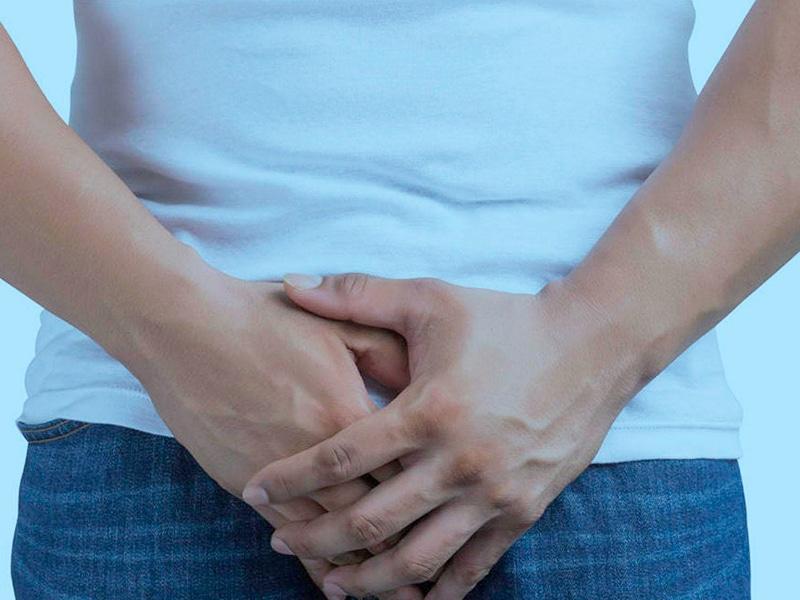
Varicocele: causes, symptoms, diagnostic, medical and natural treatment
Varicocele is relatively common, occurring in about 15% of adult males. In most men, varicocele is just an anatomical finding of no clinical significance. However, a varicocele can lead to reduced fertility or scrotal pain. Less than half of men with varicocele have a reduction of sperm count and/or sperm motility (sperm activity), reducing their reproductive potential. Less than 5% of men with varicocele have pain in the scrotal sac due to the varicocele. In this article, we will discuss all you need to know about this pathology and the natural remedy to treat varicocele.
Content
-What is a varicocele?
-African plants to treat varicocele
-Why does varicocele appear?
-What are the symptoms of varicocele?
-The degree of development of varicocele
-Is it true that varicocele causes infertility?
-Other complication of varicocele
-Risk factors for varicocele
-Diagnosis and treatment of varicocele
-Treatment of varicocele
-Treatment of varicocele in adolescents
-When to consult a doctor
-Some natural remedies to treat varicocele
What is a varicocele?
Varicocele is a set of dilated veins of the testicular spermatic cord, a similar pattern can be observed with varicose veins of the lower limbs when the dilated veins are clearly visible through the skin. Varicocele frequently causes a lump in the scrotum, affecting around 15 percent of boys and adolescents. In most cases, they occur during periods of rapid growth, for example, during puberty, and only increase over time.
Varicocele mainly affects the left testicle (in 90% of cases). In 10% of cases, both testicles are affected. Varicocele on the right testicle only is much less common.
Although many cases are easily treatable, a varicocele can cause infertility due to the decrease in the number and quality of sperm. It can also reduce the size of the testicle (testicular atrophy).
African plants to treat varicocele
If you want to regain your fertility and get rid of varicocele you have come to the right place. This is the best natural remedy one can choose to treat varicocele effectively. When you have varicocele your scrotum looks like a bag of worms. It mostly manifests on the left side. This is due to a dilation of the veins located at the level of the spermatic cord. Our natural remedy to treat varicocele is made of the best plants that have special properties that help to tighten the veins and bring them back to the normal size. It can also increase the production and quality of sperm which are lowered when you have varicocele. Our experts will keep in touch with you during the whole treatment and will give you advice on other natural remedies.
To discover our natural remedy to cure varicocele click here! OR CALL/WHATSAPP +22990431725
we deliver worldwide!!
Why does varicocele appear?
The testicles are held in the scrotum by the spermatic cord, which contains the veins and arteries that supply them with blood. When the flow of blood from the testicle is impaired, it begins to accumulate in the veins and expand over time. The exact reason why some men have a varicocele, while others do not, is currently unknown. However, it is known that risk factors more often contribute to the development of varicocele. As a rule, men who actively participate in sports or lifting weights suffer more often during labor.
What are the symptoms of varicocele?
Usually, varicocele does not cause any pronounced symptoms, except for an increase in the size of half of the scrotum, which can be more noticeable when standing. The scrotum at that time looks like a bag of worms. In addition, patients may complain:
-Notable enlarged scrotal veins
-Discomfort in the scrotum and testicles (blunt to acute). Possible deterioration during physical exertion, particularly prolonged.
-Scrotal edema
-Mass on the testicle
-Sperm deterioration and associated infertility
The degree of development of varicocele
Depending on the dilation of the testicular veins and the spermatic cord, there are 4 degrees of varicocele.
-1st degree: the veins of the testicle are not palpable, their varicose expansion is only determined in an instrumental way (ultrasound, dopplerography).
-2nd degree: the expansion of the veins is felt when standing when lying down the varicocele is not noticeable.
-3rd degree: dilated veins are felt both when standing and when lying down.
-4th degree: dilated veins in the testicle and spermatic cord are visible to the naked eye.
Most often, varicocele develops in young men during puberty, quickly reaches a degree, and no longer progresses. It is extremely rare for one degree of varicocele to pass into another.
Is it true that varicocele causes infertility?
Varicocele can sometimes reduce the likelihood of paternity. It is not known for sure how varicocele affects fertility. Most experts believe that this, at least in part, is due to the accumulation of warm blood in the scrotum, which increases the temperature of the testicle and worsens the conditions for the maturation of sperm. This is thought to reduce the number of sperm and affect the quality of the sperm.
There is evidence that couples with unexplained infertility problems may be more likely to become pregnant after treatment for varicocele.
Other complications of varicocele:
-Slow the growth of the affected testicle in adolescents.
-Decreased testosterone production in men in the older age group.
Risk factors for varicocele
-Varicocele is generally more common in men who have a family history of the disease, especially if they have brothers who have had a varicocele.
-High growth can also increase the risk of developing a varicocele.
Diagnosis and treatment of varicocele
To diagnose varicocele, your doctor should examine and palpate the testicles. Varicocele can be felt through the scrotum as a swelling outside the testicle - the so-called "bag of worms". Often a varicocele can only be felt when a person is standing and disappears when lying down when the blood pressure drops.
Your doctor should use a test such as a scrotum ultrasound to confirm the diagnosis.
Additional tests may be recommended if you suspect complications from varicocele. It can be hormonal blood tests (including testosterone levels) or a sperm analysis (to check the number and quality of sperm).
Your doctor may refer you to a urologist (a specialist in conditions affecting the male reproductive system and the urinary system) for further evaluation and treatment of your varicocele.
Treatment for varicocele is not always necessary, especially if the symptoms are mild, regular monitoring is enough to prevent complications. But if it causes pain, testicular atrophy, or infertility (due to a decrease in sperm production), treatment is recommended, especially if you are trying to have children.
Treatment of varicocele
If a man has varicocele but does not experience discomfort or fertility problems, treatment may not be necessary. However, your doctor will ask you to have regular checkups to make sure the complications have not developed. During the exam, your doctor will examine the varicocele and the size of your testicles. They may also suggest that you take a sperm test regularly to see if your fertility is affecting.
Men who experience discomfort or fertility problems associated with varicocele need a varicocele correction. Treatment for varicocele can help improve the chances of pregnancy in couples with unexplained infertility issues.
Varicocelectomy is a minimally invasive operation to remove varicose veins, in which the urologist has access to the spermatic cord through the abdominal cavity or groin to block the abnormal veins. The blood flow is diverted from the abnormal veins to healthy veins.
Varicocele embolization is a less invasive procedure in which a urologist inserts a catheter into a large vein in the inguinal region to access abnormal veins in the scrotum. Correction of varicocele, in this case, consists in blocking the lumen of abnormal vessels from the inside because special sclerosing agents are used. However, this procedure is quite technically complicated and after that, repeated cases of varicocele often occur.
Treatment of varicocele in adolescents
For an adolescent diagnosed with a varicocele, treatment is generally recommended if the affected testicle is significantly smaller than the other testicle or if he feels pain in the scrotum.
In cases where the affected testicle is smaller than the other, restoration of its size occurs after the elimination of the varicocele, but this can take up to 6 months.
When to consult a doctor
If you experience pain or swelling in your testicles or testicles of different sizes, it is important to see a doctor immediately. Any change in the normal appearance or feeling of your testicles or scrotum should be checked because some causes of lumps or swelling require immediate treatment.
In most cases, your doctor (GP) is the best consultant. Your doctor may refer you to a urologist for expert advice, additional tests, or treatment
Some natural remedies to treat varicocele
1- Herbs as an aid in varicocele
At the initial stage of varicose veins, surgery is not necessary. Varicocele is treated without surgery using conservative techniques. Traditional medicine offers many medicinal herbs that combat vascular hypotension:
-cinquefoil root;
-blueberries
-absinthe;
-chestnut;
-Wort
-sage;
-mountain ash;
-wheatgrass.
The composition of the herbs includes bioflavonoids, tannins, vitamins, and organic acids that stimulate blood circulation and cell metabolism. With systematic treatment with folk remedies, it is possible to prevent complications from varicocele - impotence, and infertility.
2- Compresses

Compresses are one of the alternative therapy methods, which is most often used for varicocele in men. Gauze soaked with herbal decoctions and infusions is used to:
-pain relief;
-strengthen the walls of blood vessels;
-stimulation of blood circulation in the groin;
-reduce inflammation.
To obtain a therapeutic effect compresses with varicocele are performed at least 1 to 3 times a day for 1 month.
3- Chestnut

The seeds, flowers, and leaves of chestnut have pronounced general veinotonic, anti-inflammatory, and reinforcing properties. Therefore, it is included in the composition of many folk remedies for varicocele:
-15 ripe fruits for 1 liter of vodka. Leave in a cool, dark place for 2 months. Mix 100 ml of boiled water with the same amount of tincture. A cotton gauze dressing is moistened in the solution and applied to the affected area for 10 to 15 minutes.
-1 tablespoon l flowers and seeds of horse chestnut are boiled in 250 ml of water for 3 minutes. Insist on the broth for 3 hours, after which it is filtered. The gauze folded four times in the liquid is moistened, applied to the scrotum until it dries completely.
Varicocele is treated with folk remedies only with a degree of dilation. To improve the anti-inflammatory effect, add to the recipe for ½ tablespoon. l wise grasses. The procedure is carried out 1 to 3 times a day for 4 weeks.
4- Cabbage

With an alternative treatment for varicose veins of the testicles, compresses with white cabbage are often used. It contains vitamins of groups B and C, selenium, cobalt, and other useful substances which have a protective capillary effect.
The folk recipe for a varicocele compress with cabbage:
-1 cabbage leaf is rolled out with a rolling pin;
-one side is greased with sunflower or olive oil;
the treated side has applied a sheet on the inguinal region for half an hour.
If a man is suffering from the initial stage of varicocele, treatment will take 15 to 20 days. The procedure is performed daily at least 1-2 times a day.
5- Lilac

With the expansion of blood vessels, white lilac is effective, which has angioprotective, anti-inflammatory, and antiseptic properties. Traditional medicine offers a choice of several veinotonic solutions for compress:
-Tincture on water. 1 glass of flowers is poured into a thermos. Pour 400 ml of boiling water. Leave on for 3 to 5 hours, then filter. Add 10 drops of cinnamon essential oil. A cotton gauze pad is moistened in a liquid and applied to the problem area for half an hour.
-Alcohol tincture. The inflorescences of white lilac and acacia are mixed in equal proportions. 1 glass of raw material is poured into a jar, pour 1 liter of vodka and close with a nylon cover. Insist in a dark place for 2 weeks. Mix with boiled water in a ratio of 1: 1. The solution is used to compress 2 times a day.
Treatment of varicocele with folk remedies takes 4 to 8 weeks. Compresses are only refused after the heaviness of the groin, pain, and swelling of the testicles have disappeared.
IF YOU FOUND THIS ARTICLE USEFUL, DROP A COMMENT BELOW.
FOR MORE QUESTIONS ON OUR PRODUCT You just have to click here!!!
OR CALL/WHATSAPP +22990431725
we deliver worldwide!!







